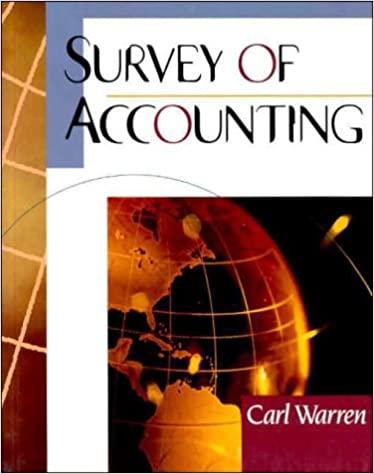Question
Play Company acquired an 80% interest in Stop Company for $272,000 cash on January 1, 2016. Sunday had the following Balance Sheet on the date
Play Company acquired an 80% interest in Stop Company for $272,000 cash on January 1, 2016. Sunday had the following Balance Sheet on the date of acquisition:
| Stop Company Balance Sheet January 1, 2016
|
The excess of the price paid over book value is attributable to the Depreciable Fixed Assets, which have a fair value of $260,000. The Depreciable Assets have a 10-year remaining life. Stop sold a piece of Land to Payday for $60,000 on January 1, 2017. It cost Stop $50,000 to purchase the land from an external party.
On January 1, 2018, Stop held merchandise acquired from Play for $20,000. This beginning inventory had an applicable gross profit of 40%. During 2018, Play sold $60,000 worth of merchandise to Stop. Stop held $30,000 of this merchandise at December 31, 2018. This ending inventory and an applicable gross profit of 35%. Stop owed Play $23,000 on December 31, 2018 as a result of these intercompany sales.
On January 1, 2018, Play held merchandise acquired from Stop for $10,000. This beginning inventory had an applicable gross profit of 25%. During 2018, Stop sold $40,000 worth of merchandise to Play. Play held $6,000 of this merchandise at December 31, 2018. This ending inventory had an applicable gross profit of 30%. Play owed Stop $11,000 on December 31, 2018 as a result of these intercompany sales.
Stop sold bonds on January 1, 2015 with a face value of $50,000. These bonds carry a coupon interest rate of 8% and term to maturity of 5 years. The bonds were issued when the market rate was 9%. When Play purchased these bonds on January 1, 2017, the market rate was 10%. Both companies use the Effective Interest method to amortize the premium/discount on the bonds.
2 Play and Stop had the following trial balances on December 31, 2018:
| Balances: | Play | Stop |
| Payday Sunday Accounts Receivable | 124,000 | 85,000 |
| Inventory | 6,000 | 30,000 |
| Depreciable Fixed Assets | 400,000 | 200,000 |
| Accumulated Depreciation | (130,000) | (40,000) |
| Land | 60,000 | |
| Investment in Subsidiary | 272,000 | |
| Investment in Subsidiary Bonds | 49,090 | |
| Goodwill | 10,000 | |
| Accounts Payable | (80,000) | |
| Bonds Payable | (50,000) | |
| Discount on Bonds Payable | 459 | |
| Common Stock | (300,000) | (100,000) |
| Retained Earnings, January 1 | (348,264) | (134,880) |
| Sales | (200,000) | (100,000) |
| Expenses | 160,000 | 85,000 |
| Interest Revenue | (4,826) | |
| Interest Expense | 4,421 | |
| Dividend Income | (8,000) | |
| Dividends Declared | 0 | 10,000 |
| Total | 0 | 0 |
(1) Using TVM principles:
a. Calculate how much Stop Company received on January 1st 2015 for issuance of the bonds. Round to the nearest dollar.
b. Calculate how much Play Company paid to purchase the bonds on January 1st 2017. Round to the nearest dollar.
c. Prepare one bond amortization schedule for both the issuer and purchaser. Round each figure to the nearest dollar.
(2) Prepare the Eliminating and Adjusting Entries, the Schedules and Worksheet necessary to produce the consolidated financial statements of Play Company and its subsidiary for the year ended December 31, 2017.
Step by Step Solution
There are 3 Steps involved in it
Step: 1

Get Instant Access to Expert-Tailored Solutions
See step-by-step solutions with expert insights and AI powered tools for academic success
Step: 2

Step: 3

Ace Your Homework with AI
Get the answers you need in no time with our AI-driven, step-by-step assistance
Get Started


